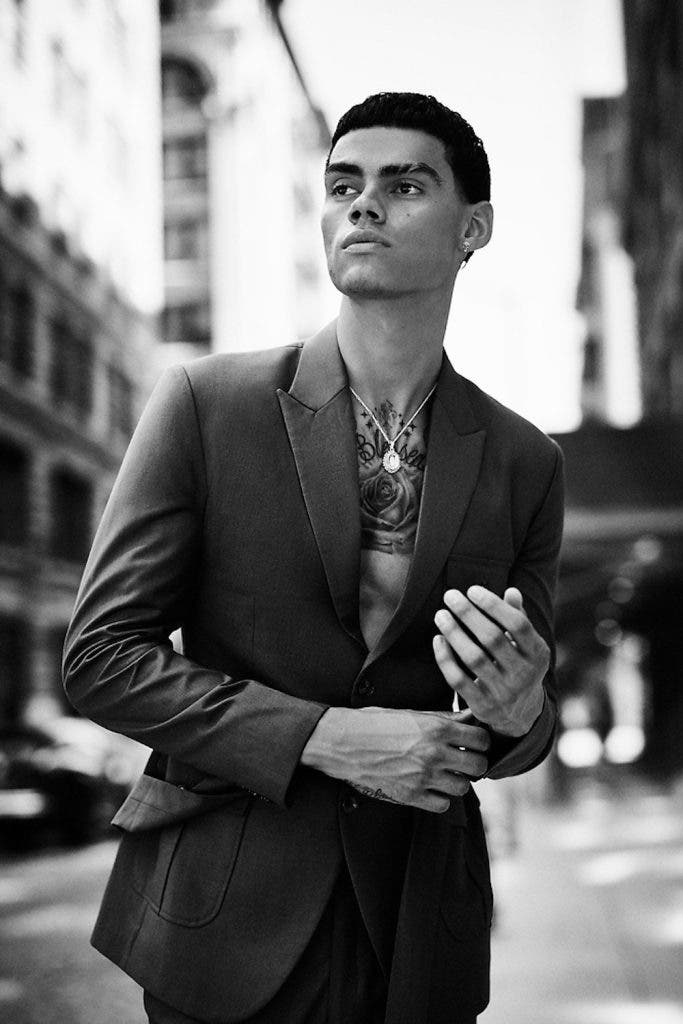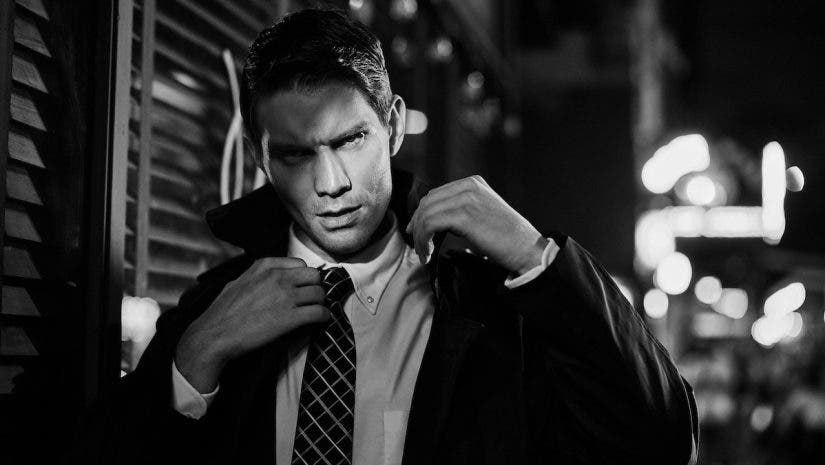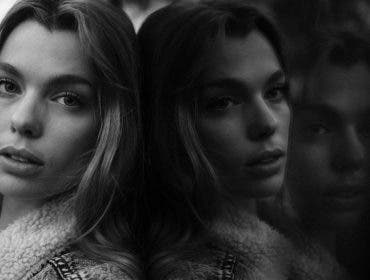One of the best ways to create more dynamic poses for men is to introduction action into the scene. Rather than selecting a static poses, give your male model an activity that will create a more authentic moment or less rigid body language.
Far too often with men’s fashion photography the solution for posing is just ‘”stand here.” This can work, but often the energy in the photo falls flat. Let’s change that with action poses!
You can start with small action poses for men, like fixing the jacket or cuffs, and then move onto more exaggerated poses like leaping. You’ll see that these movement are simple, but they help add a bit more energy to your shots.

Adjust the Jacket
It really is as simple as is sounds. Have the subject adjust their jacket in a number of ways. Reposition the center of the jacket, fix the collar, smooth down the edges, etc. As they do so, try to vary the expression and positions of the head. Have the subject look over their shoulder, directly at camera, or gaze down toward the ground to create variety.
If the subject doesn’t have a jacket on, a great alternative is to “fix the hair.” One shot can look as though they are wiping their brow and another like they are thinking while rubbing the back of their neck. This helps to create action regardless of the clothing they are wearing.

Adjust the Cuff
Adjust the cuffs. People are often so awkward with their hands. Over and over again you may find yourself looking for a way to keep their hands busy… and this is one of them! Sure, you can put the hands in the pocket but that often leads to constrained poses.
Try something like adjusting the cuff. If the subject’s elbows are out to the side of the body, this will help them to look broader. Arms extended while fixing cuffs can be exaggerated and visually interesting. This works for a jacket, long sleeve shirt, or suit. In fact, this is a staple of men’s suit posing in every catalog.

Step and Repeat
Get the subject to repeatedly take two or three steps, each time “landing” in the best light. Paying attention to the light when walking is important, whether in the studio or on location. Give the subject a mark where they should hit their best pose and with the most energy.
With each repeated step, try varying some element of the body. For example, during one step have them look over their shoulder and laugh. On the next round, try them holding on their jacket with one hand while looking down the street. Try some steps that are exaggerated with dramatically swaying arms. The more dramatic movement may translate to more lively results on camera.
Pro Tip: You may want to switch your focus mode to Servo to keep sharp focus on the subject by tracking motion, even at wider apertures.

Dramatic Step or Leap
Analyze your environment for opportunities for the subject to “leap” or take dramatic steps. The subject can be stepping off a curb, going up or down stairs, or acrossing the street.
For this directed action, adjust the angle of the torso to be most flattering for that individual. For very slender subjects, you may want to turn their shoulders back toward camera (even if stepping perpendicular) to help give them broader shoulders. For a bit wider subject, find the angle that flatters their mid-section or creates visual balance in the pose.
If they are leaping toward you, vary the angle of the body slightly to the left or right of the frame for improve compositional results.
Pro Tip: If you are shooting at a wider aperture, make sure to check your focus or use the appropriate focus mode in your mirrorless camera. Try face and eye tracking, Servo mode, etc.

Leaning (Playing with Hands)
Lean your subject against a wall, car, or other surface. Many subjects appear awkward when you just have them stand in place. Giving them motion or leaning them against something helps to anchor them and give them purpose.
Once leaning your subject, try some of the tips above of adjusting the jacket, cuffs, or even rubbing the hands together to give them action. Have them look away, over the shoulder, or at the camera to create visual variation.
Try a leg up against the wall to keep the subject comfortable and have them lean out on the leg if you want to create more triangles and strong shapes in your pose.
Fashion vs. Portrait
Although these are fashion poses for men, these concepts can certainly apply to portrait subjects, athletes, high school seniors, and more. While I recommend that for inexperienced (or more awkward) subjects you carefully direct all elements of the pose, with more comfortable subjects try to get them moving. The same concepts apply!
Check out more advice on poses for men in my AdoramaTV video below:
For more on portrait photography, check out Tips for Aesthetic Portrait Photography with Brandon Woelfel.






